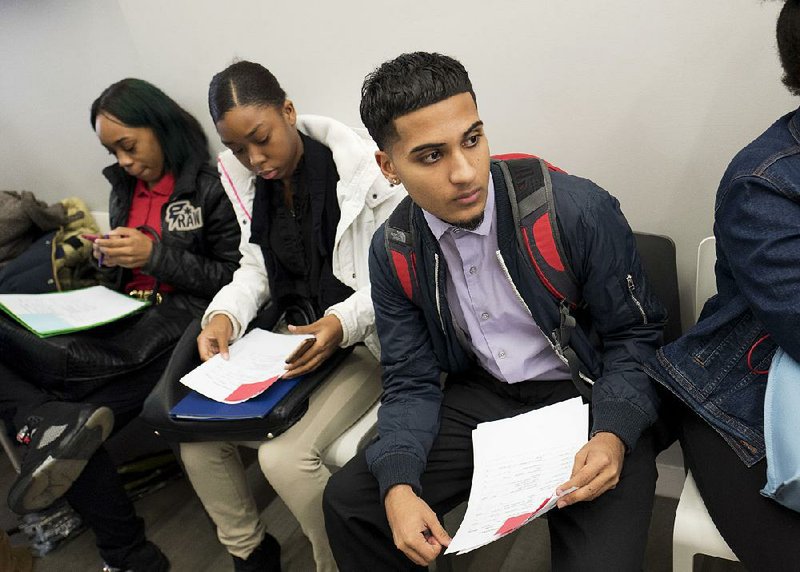WASHINGTON -- U.S. companies added 216,000 jobs in November, the most since June, and consumer spending and incomes rose in October, according to reports released Wednesday.
Payroll processor ADP said nearly all the job gains in November occurred in service sectors such as retail, hotels and restaurants, as well as higher-paying professional services. Construction firms added 2,000 jobs, while manufacturing shed 10,000.
The figures add to other recent signs that the economy is expanding at a decent pace. Growth reached a 3.2 percent annual pace in the July-September quarter, the government said Tuesday, much higher than the 1.1 percent rate in the first half of the year. Americans in October bought homes at the fastest pace in a decade, and consumer confidence is at a nine-year high.
By one measure, home prices nationwide have surpassed their pre-recession peaks, increasing household wealth. And there are signs that wages are picking up after years of sluggish growth.
"Overall, consumers are feeling confident and are driving the strong performance we currently see in the job market," said Ahu Yildirmaz, head of the ADP Research Institute.
Mark Zandi, chief economist at Moody's Analytics, said retail hiring for the Christmas-shopping season was especially strong, even after seasonal adjustments intended to offset those effects. That suggests retailers may be ramping up their temporary hiring efforts earlier to ensure they can find enough workers, he said.
Americans' incomes in October increased at their fastest pace in six months, according to a separate report from the Commerce Department on Wednesday. That report showed that the growth in spending slowed in October after a sharp increase in September.
Those trends make it increasingly likely that the Federal Reserve will raise short-term interest rates at its next meeting in two weeks. Investors see a 94 percent probability of a rate change at that time, according to futures trading on the Chicago Mercantile Exchange.
The ADP data cover only private businesses and often diverge from government figures. Economists forecast that the government's jobs report, to be released Friday, will show a gain of 174,000 jobs, according to data provider FactSet.
Consumer spending increased 0.3 percent in October after a revised 0.7 percent jump in September, the Commerce Department said Wednesday. Incomes increased 0.6 percent, the best showing since April.
"The income number was pretty solid, and consistent with what we've seen in the recent employment data," said Tom Simons, an economist at Jefferies LLC in New York. Fed officials, who are mandated by law to pursue maximum employment and stable prices, are "looking at the most recent data with regard to the dual-mandate goals, and they're pretty confident that the economy is ready for one more rate hike, at least," he said.
An inflation gauge closely followed by the Fed increased 1.4 percent compared with a year ago. That was the fastest 12-month advance since 2014. The rise was still below the Fed's 2 percent target, but with inflation firming, the Fed is expected to boost a key interest rate this month.
The inflation gain marked the strongest pace since prices rose 1.5 percent for the 12 months ending in October 2014.
By comparison, the 12-month increase a year ago was a tiny 0.3 percent during a time when oil prices were plunging. The absence of inflationary pressures has been a key reason the Fed has been slow to change its benchmark interest rate.
With incomes rising faster than spending, the saving rate jumped to 6 percent in October, up from 5.7 percent in September.
The rise in spending reflected a 1 percent increase in purchases of durable goods such as autos and a 1.4 percent rise in spending on nondurable goods. Spending on services such as doctor's visits and utilities fell 0.2 percent in October.
Analysts believe growth will slow a bit to around 2 percent in the current quarter.
Information for this article was contributed by Christopher S. Rugaber and Martin Crutsinger of The Associated Press and Michelle Jamrisko of Bloomberg News.
A Section on 12/01/2016
